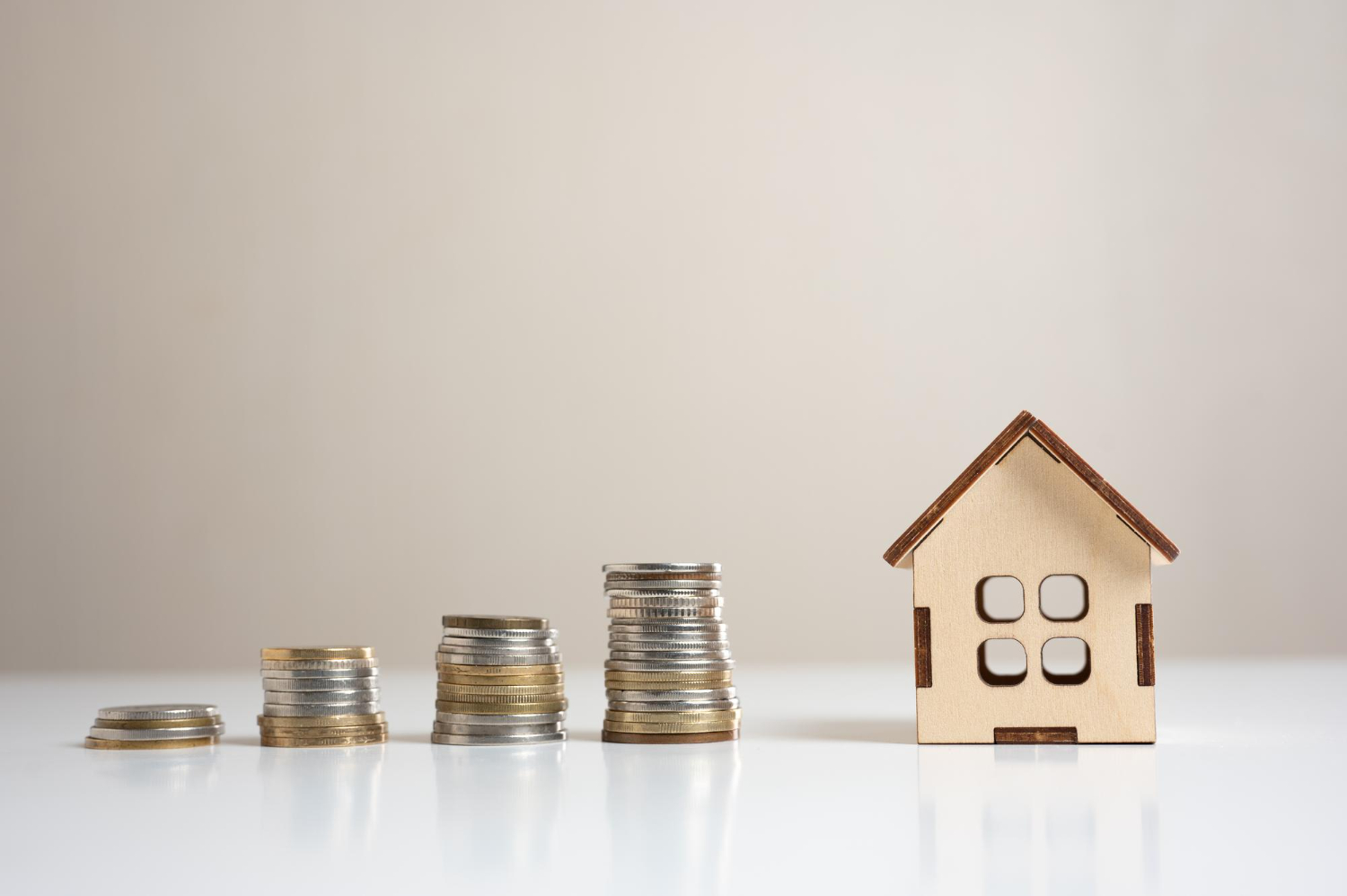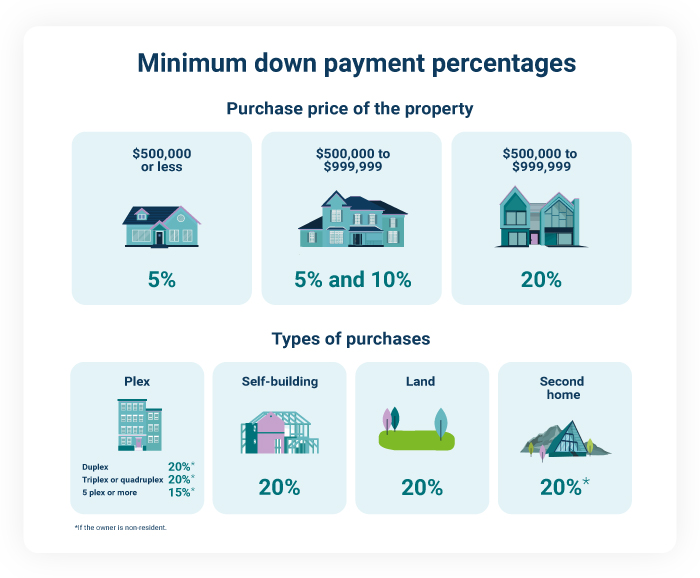Buying a Home: What Percentage Should I Put Down?
Buying a
home
is
one of the most important investments of your life. It’s exciting but can also
be daunting, especially when it comes to paying for it. One of the most
important aspects to consider is the down payment.

Down payments can be a source of uncertainty. How much is the down payment for a house? Is a 5% or 20% down payment more advantageous? How can you put the money together quickly? What if you don’t have enough money?
In this article, we’ll answer these questions and more to help you with everything you need to know about buying your new home.
What is a down payment?
A mortgage down payment is part of the total amount a buyer pays for a property. This payment comes from your personal savings and is subtracted from the purchase price of the home. The amount of the down payment also determines the mortgage you need.
|
Tips and tricks
The minimum down payment depends on the property value. The higher the price, the larger the down payment. |
What is the minimum down payment for a home?
As a general rule, the minimum down payment is 5% of the purchase price, but 20% is recommended. However, this amount may vary depending on the type and value of the property.

Your financial institution may require a higher down payment in some cases, such as if it’s a rental property or if you’re self-employed, have ineligible income, or have a poor credit history.
If your down payment is less than 20%, you will be required to buy mortgage loan insurance.
Here’s a summary of the minimum amount of down payment based on the purchase price of the home.
|
|
|
|
Purchase price of the home |
Percentage of down payment required |
|
$500,000 or less |
5% of the purchase price |
|
$500,000 to $999,999 |
5% of the first $500,000 of the purchase price |
|
$1 million or more |
20% of the purchase price |
|
Tips and tricks
The larger the down payment, the lower the mortgage and the less interest you pay. To find out what you can afford, consider applying for a mortgage pre-approval. |
Down payment for a duplex
The minimum down payment for a duplex is 5% for the first $500,000 and 10% for the remaining amount. This applies if you plan to live in one of the two units after purchase. If not, a 20% down payment is required.
Down payment for a triplex or quadruplex
For a three- or four-unit property, the typical down payment is 10% provided you are an owner-occupant. Otherwise, the minimum down payment is 20%.
Down payment for a 5 plex or more
Whether you live on the property or not, your financial institution will require a minimum down payment of 15% for a property with five or more units. Unlike the above cases, the amount of the down payment is determined by the building’s economic value and not its sale price.
Down payment for land
If you’re buying land to build your property on, financial institutions typically require a minimum down payment of 20%. In this case, mortgage loan insurance is usually not required. In addition, land purchase loans are amortized over 15 years.
Down payment for self-building
If you self-build, financial institutions can lend up to 80% of the total project cost and you will need to provide a 20% down payment.
When preparing your budget, consider direct costs such as materials and labour, as well as indirect costs such as permits, a certificate of location and appraisals. Allow a margin of roughly 15% for contingencies.
Down payment for a second home
If you want to buy a second home as an owner-occupant, the same rules apply as for a first home. However, if you buy a condo or cottage and plan to rent it out but not live in it, a 20% down payment is required and your investment will be considered commercial.
How do I calculate the down payment on a house?
To calculate the down payment , just multiply the purchase price by your desired percentage. Below is a table with two down payment scenarios and the required amounts.
|
|
||
|
Home value: $350,000 |
||
|
Single instalment |
Down payment (%) |
Down payment ($) |
|
$350,000 |
5% |
$17,500 |
|
Home value: $650,000 |
||
|
Two instalments |
Down payment (%) |
Down payment ($) |
|
$500,000 |
5% |
$25,000 |
|
$150,000 |
10% |
$15,000 |
|
Minimum down payment: |
$40,000 |
|
What is mortgage loan insurance?
If your down payment is less than 20% of the purchase price, you will need to obtain mortgage loan insurance, also known as mortgage default insurance. This insurance is intended to protect the lender if you fail to pay.
The mortgage insurance premium is included in your mortgage. Premiums range from 0.6% to 4.5% of the mortgage amount and depend on the down payment. The higher the down payment, the less you will pay in premiums.
The below chart illustrates CMHC mortgage loan insurance premiums.
|
|
||
|
Loan-to-Value |
Premium on Total Loan |
Premium on Increase to Loan Amount for Portability |
|
65% or less |
0.60% |
0.60% |
|
65.01% to 75% |
1.70% |
5.90% |
|
75.01% to 80% |
2.40% |
6.05% |
|
80.01% to 85% |
2.80% |
6.20% |
|
85.01% to 90% |
3.10% |
6.25% |
|
90.01% to 95% |
4.00% |
6.30% |
You can pay the premium in one instalment or add it to your mortgage. If you choose the second option, you will pay interest at the same rate as the interest on your mortgage. In Quebec, the premium is subject to provincial tax and this tax cannot be added to the loan.
|
Tips and tricks
A lender can request mortgage loan insurance even if your down payment is 20% , especially if you’re self-employed or have poor credit history. |
How much of a down payment should I put on a home?
You guessed it: the more you save for the down payment, the less you’ll have to borrow. This will affect several aspects of your real estate transaction, such as the value of the home you can buy, your mortgage payments and, if applicable, your mortgage insurance premium.
Below is a concrete example from the Financial Consumer Agency of Canada for buying a $400,000 home under the following conditions:
- 4% interest rate
- 25-year amortization period
- Monthly payments
- Mortgage loan insurance premium
|
|
|||||
|
Down payment (%) |
Down payment ($) |
Mortgage |
Mortgage loan |
Mortgage (including |
Total cost of |
|
5% |
$20,000 |
$380,000 |
$15,200 |
$395,200 |
$643,649 |
|
10% |
$40,000 |
$360,000 |
$11,160 |
$371,160 |
$625,712 |
|
20% |
$80,000 |
$320,000 |
Not required |
$320,000 |
$584,979 |
How to save for a down payment
The idea of having to save up so much money can be intimidating. The first step to creating a realistic budget is to understand your income and expenses while taking your lifestyle into account. This will help you determine your borrowing capacity and what you can afford.
Learn about government strategies, tax systems and incentives that can maximize your personal savings:
- Home Buyers’ Plan (HBP)
- Tax-Free Savings Account (TFSA)
- First Home Savings Account (FHSA)
- Tax credits and other incentives
- Financial assistance from your loved ones
Check out this article to learn more about the different ways to buy a house with no down payment.
|
Tips and tricks
Spending between 32% and 39% of your family income on housing expenses and up to 44% on total debt repayment is recommended. Try to stay on the lower end of this scale so you can be ready for unexpected circumstances. |
The first step to buying a home is saving for a down payment
Regardless of your situation, a crucial step toward buying a home is saving for a down payment. Remember, it’s never too early to assess your financial situation and establish a long-term plan.
Once you’ve taken this step, you’ll have all the information you need to get pre-approved for a mortgage and start looking for your new home. Contact real estate brokers so they can help you turn your dream into a reality.
Frequently asked questions
Why should I put down 20%?
In addition to reducing the amount of your mortgage and the percentage of interest paid at the end of amortization, a down payment of 20% of the purchase price of a home generally exempts you from mortgage loan insurance and associated interest.
Can I put down 5% to purchase a second home?
It’s possible to put a 5% down payment on a second home, but this may depend on your financial institution’s policies, your credit history and your personal situation. A higher down payment may yield better loan terms.
How can I put together a down payment quickly?
There are several strategies and government incentives to help you save through tax benefits. These options include using your savings, financial assistance from your loved ones, the Home Buyers’ Plan (HBP) and Tax-Free Savings Accounts (TFSAs). Various tax credits are also available.
How to get pre-approved for a mortgage
The HBP, a tool to increase the down payment of a first property
